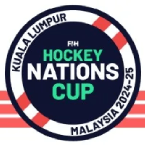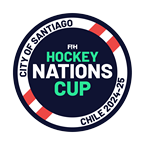
When India women line up for their first match at the 2016 Rio Olympics, they will be making history.
In the 36 years that women’s hockey has been included in the Olympics, India has never qualified. The team took part in the inaugural event in 1980, which was an invitation event, but at every edition since, they have failed to qualify.
India’s qualification route this time round, came via the Hockey World League (HWL) Semi-Finals. The team ranked 13th in the world beat Japan 1-0, securing fifth spot in that competition and a place in Rio and history.
The goal scorer on that occasion, and on so many other occasions, was Rani Rampal, India’s 21-year-old goal-scoring machine.
Rampal’s story perhaps highlights why India women’s hockey team has been in the shadows for so long, and why it is now emerging onto the international stage.
The player entered the Shahbad Hockey Academy as a fragile and unbalanced seven-year-old. The coach, Baldev Singh told her in no uncertain terms that he had no hope of turning her into a hockey player. “You can’t play,” he said. “You can’t even run properly.”
Singh’s rejection was compounded by her parent’s attitude at the time. “Everyone told us we would regret giving her so much liberty. They said ‘now she has started wearing shorts, soon you will see how she brings dishonour to your family’”.
Rampal proved both Singh and her parents wrong. At 14 she was playing for the national team; in the Hockey World League Round One in 2009 she was India’s top scorer, setting her team on route to qualification for Rio; in 2010 she was in the FIH All Stars Team of the Year and in 2013 she led India to a bronze medal at the Women’s Junior World Cup.
Perhaps the highlight of her career so far came when she scored the goal in the HWL Semi-Finals earlier this year that saw India beat Japan and finally put them in the frame for qualification for Rio.
There is no question that women’s hockey in India is still light years behind the men’s game in terms of sponsorship, funding, media coverage and general interest.
The players in the national squad are given employment in public sector companies – Rampal worked for Indian Railways for five years and has just been offered a post as assistant coach by the Sports Authority of India – but as the striker says: “Just my shoes cost 10,000 rupees”, (she is paid 12,000 rupees a month).
Indian sports commentator Prem Panicker says that much of the problem is a lack of a structure at the lower levels of the game, without this, the talented young girls will not have a pathway to follow. But this is where the Shahbad Academy is leading the change.
The town of Shahbad is a rural area rapidly transforming into an urban sprawl, but the Academy is what sets it apart from hundreds of other towns across India. In total, 45 women from this area have played or are playing for the national squads.
Every morning, before school, girls and boys from miles away will turn up for training sessions. Parents are moving to the area to give their children the best chance of making it as a hockey player.
“Relocating our base was a huge risk, but looking at Ritu Rani, Rani Rampal, I keep dreaming about how I might see my daughter right up there,” says the mother of one aspiring 11-year-old.
With both the men and the women on the plane to Rio; with the Hockey World League Finals in Raipur later this month; with the men’s Junior World Cup taking place in India in 2016 and the women very likely to do well in the women’s Junior World Cup in Chile; hockey’s national governing body, Hockey India, has a tremendous opportunity to engage with the next generation, male and female.
Could this be the time that India women’s hockey takes some giant steps towards centre stage?
Find out more about the Shahbad Hockey Academy by watching this video by Mint below:

























